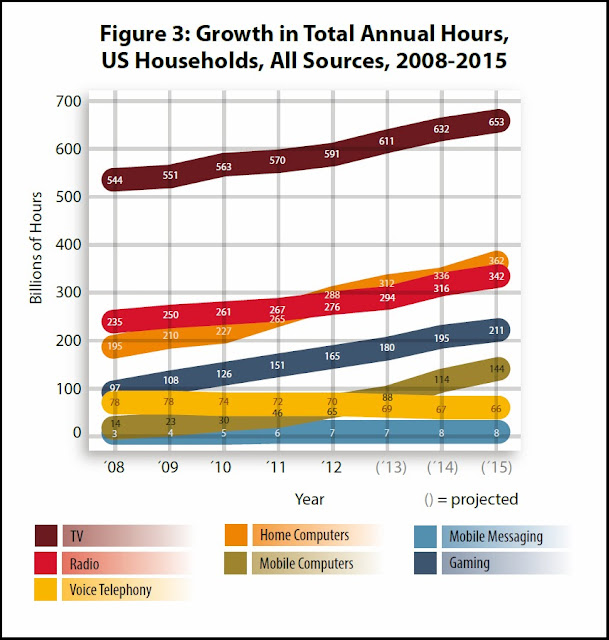By University of San Diego.
So when do we have time to sleep or work if we spend every waking minute being exposed to myriad media? The answer is that media delivered is not a measure of attention or comprehension of that media.
While such a high rate of multiple-stream media traffic sounds overwhelming, the idea of us suffering sensory overload is not as dire as some may think, says Short, who is also lead scientist for SDSC’sCenter for Large-Scale Data Systems Research (CLDS) as well as a CTM Visiting Researcher.
“While machines can always overload us, it’s more a question of, how can we design these systems to produce meaningful value? That’s the critical challenge as we speed further into the age of digitally-based information,” according to Short.
The record level of U.S. media consumption focuses on media consumed in and out of the home, excluding workplace media, between 2008 and 2015. It defines “media” according to 30 categories (e.g. television, social media, computer gaming). Information reported in the study was canvassed from several hundred data sources, including media measurement firms such as Nielsen, Arbitron, ComScore, investor and analyst firms, government sources, and foundation and research publications. Some highlights of the How Much Media? (HMM) report:
Mobile messaging hours, which in 2012 accounted for approximately 9 percent of voice call hours, will double to more than 18 percent of voice hours, a year-over-year growth rate of more than 27 percent.
The HMM report also includes data on Americans’ media consumption dating back to the 1960s. During those decades, the supply of digital media measured in bytes has grown at compounded rates ranging between 6 and 30 percent each year. Growth in consumptive time, however, has been increasing at compounded rates ranging between 3 to 5 percent each year. The upshot: supply is driven by rapidly advancing device capacities and faster networks. Growth in consumptive time, however, is destined to continue its slow but steady increase. Constrained by human physical limits, including the length of a day, growth in consumptive time will never exceed a few percent per year.
The “How Much Media?” research program was sponsored by an industry consortium including Alcatel-Lucent, AT&T, Cisco Systems, Hewlett Packard, PricewaterhouseCoopers, Seagate Technology and Verizon Wireless. Lucy Hood, president and chief operations officer of the Academy of Television Arts and Sciences, and Josette Bonte, CTM chief strategy officer and director of research, contributed industry guidance and program support.




